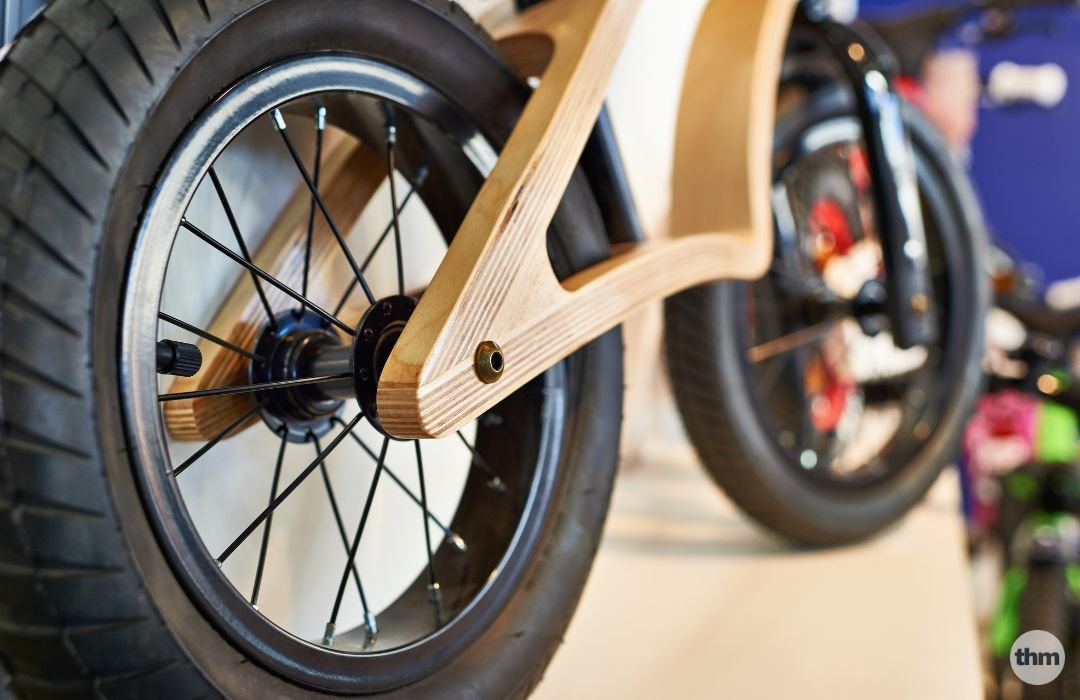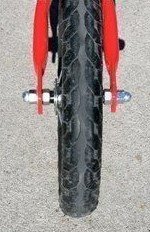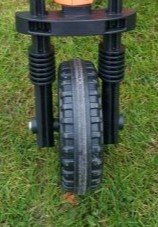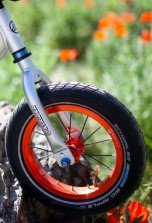
Different Types of Balance Bike Tires
This page contains affiliate links for which we may be compensated
Last updated: July, 2024
Selecting the right balance bike tires is just as important as selecting the right balance bike for your child. Balance bikes are a great way to introduce kids to the world of cycling. They offer stability and balance, which means less time re-positioning your child when they lose their balance on the bike or have trouble steering. Balance bikes also provide an opportunity for children to develop their sense of balance without them having any fear of crashing or getting hurt since there is no possibility of falling off! When it comes to choosing a balance bike for your child, you will need to consider what type of tire might be best for them.
There are different types of balance bike tires available and each serves a specific purpose. So, in this post, we’re going to discuss 5 types: air tires, rubber tires, foam-filled tires, plastic tires, and big apple tires. These tires can be found on both metal-frame and wooden balance bikes.
Once you’ve gone over each type, be sure to use our navigation buttons at the end of this article to find the right balance bike for your child.
Types of Balance Bike Tires

Air Tires
Also called pneumatic tires, these are great for kids who want to feel like they’re riding a real bike but don’t need the extra stability that other types of balance bikes offer. The air inside these durable rubber tires offers more cushioning on bumpy roads and off curbs than solid rubber does so it’s better suited for smoother surfaces. While air tires offer a softer ride and last longer than solid plastic tires, you do need an air pump in order to inflate the tires so you’ll need to invest in an air pump if you don’t already have one.
Advantages: Best for a realistic biking feel and comfort on smoother surfaces, but requires maintenance with an air pump.

Rubber Tires
Solid rubber tires are perfect for kids who want the balance bike to be as close to a real bike experience as possible and don’t mind sacrificing some comfort in order to get it. These offer more traction than air or foam-filled tires so they’re better suited for rougher terrain, but since they don’t have air inside they’re more likely to get a flat tire.
Advantages: Ideal for children who prioritize a bike-like experience and are frequently riding on rougher terrain, though they have a higher risk of flats.

Foam Tires
Foam tires are best for kids who want the balance bike experience without having to worry about getting a flat, but don’t need the extra stability offered by solid rubber or pneumatic tires. These can be good if your child regularly rides on pavement and concrete, but they’re not recommended for kids who will be riding off-road or in a more rugged environment.
Advantages: Suitable for kids who primarily ride on pavements and concrete, offering a flat-free experience but not recommended for rugged off-road use.

Plastic Tires
These are the cheapest and most common types of balance bike tires. They’re durable, but they also wear out quickly if your child likes to go off-road or ride on rough terrain.
Advantages: A budget-friendly option that’s durable but wears out faster, especially in off-road conditions.

Big Apple Tires
It is also known as Fatboy tires, due to their wide profile, these tires provide a smoother ride thanks to extra traction and shock absorption.
Advantages: Provide a smoother ride with extra traction and shock absorption, great for a variety of surfaces due to their wide profile.
Conclusion
When selecting tires for a balance bike, it’s crucial to consider the specific needs and riding conditions of your child. Each type of tire offers distinct advantages. Ultimately, the choice of tire should align with the terrain your child will be riding on and their comfort and stability needs. By carefully considering these factors, you can ensure a safe, enjoyable, and appropriate balance biking experience for your child.